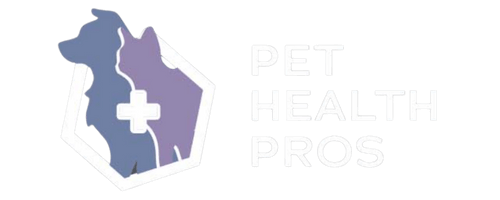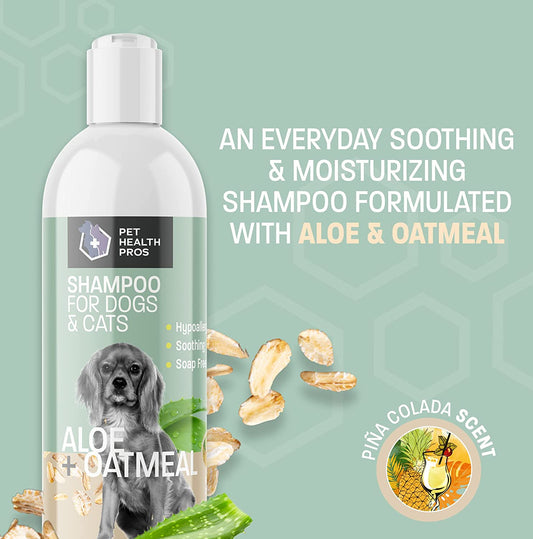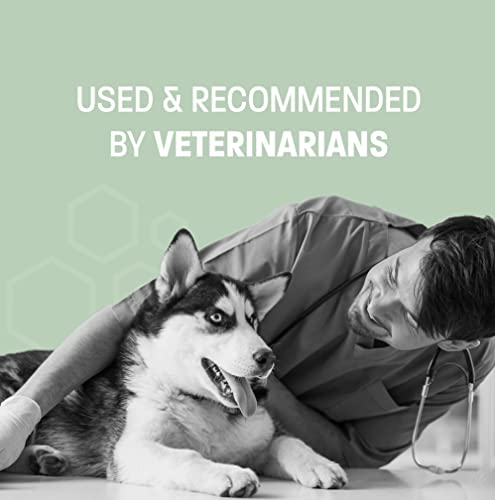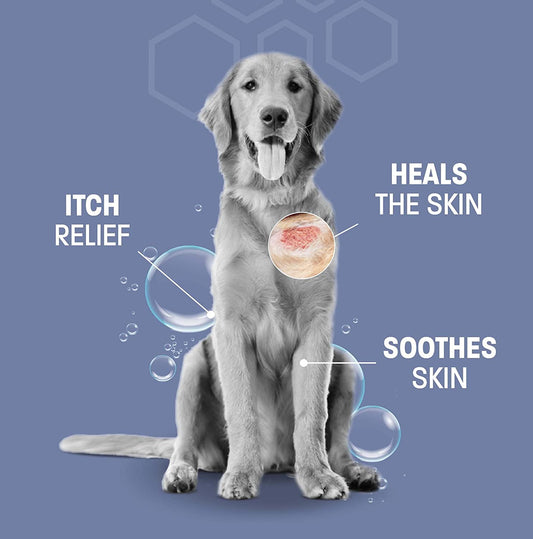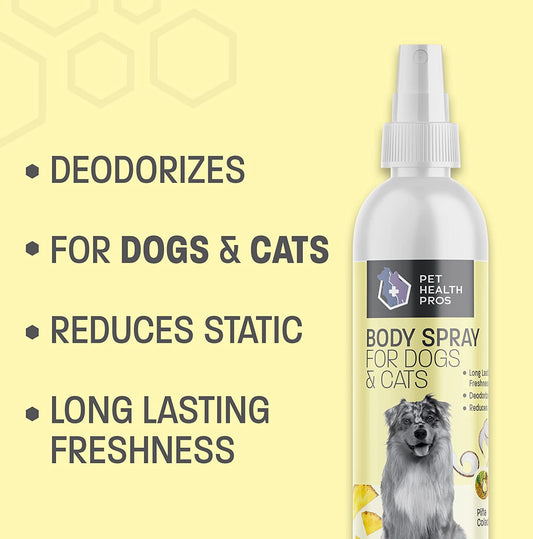Dogs chewing on stuff can be a real headache. Whether it's your favorite shoes or the leg of your dining table, nothing seems safe. But don't worry, understanding why dogs chew and how to manage it can save your belongings. From using taste deterrents to training techniques, there are plenty of ways to keep your things intact. Let's dive into some practical tips to help you and your furry friend get through this.
Key Takeaways
- Dogs chew for many reasons, including teething, boredom, and anxiety.
- Common chew targets include shoes, furniture, and outdoor plants.
- Taste deterrents can help discourage chewing on specific items.
- Training and providing chew toys are effective ways to manage chewing habits.
- Monitoring your dog's diet and health can also influence their chewing behavior.
Understanding Why Dogs Chew
Natural Instincts and Chewing
Dogs have a natural urge to chew. It's something they're born with, a bit like how cats love to scratch. Chewing helps dogs explore their world, and it also keeps their jaws strong and teeth clean. For some dogs, chewing is just a fun way to pass the time. But if they're not given the right things to chew on, your shoes or furniture might end up as their next target.
Teething in Puppies
Puppies chew a lot when they're teething, just like human babies. Their gums can get sore, and chewing on things helps ease the pain. During this time, they might try to chew on anything they can get their paws on. It's important to provide them with appropriate chew toys to help them through this stage.
Boredom and Anxiety
When dogs are bored or anxious, they might turn to chewing to relieve stress. Chewing can help them cope with feelings of loneliness or anxiety, especially if they're left alone for long periods. Providing mental stimulation and regular exercise can help reduce this kind of chewing. Sometimes, using an anti-chew spray can assist in discouraging this behavior, but it should be paired with training and supervision for the best results.
Dogs chew for various reasons, and understanding these can help you manage and direct their chewing habits in a positive way. By recognizing their needs, you can prevent destructive chewing and keep your belongings safe.
Identifying Common Chew Targets
Household Items at Risk
Dogs often see everyday household items as potential chew toys. Furniture legs, remote controls, and shoes are frequent victims. These items are usually at a dog's eye level and easy to access. Electrical cords are especially dangerous chew targets due to the risk of electrocution. It's crucial to keep these items out of reach or protected with cord covers.
Personal Belongings Dogs Love
Personal items like glasses, wallets, and cellphones are often irresistible to dogs, mainly because they carry their owner's scent. Dogs are naturally curious and might chew on these items out of boredom or separation anxiety. Keeping personal belongings in closed drawers or high shelves can help prevent unwanted chewing.
Outdoor Objects and Plants
Outside, dogs may target garden hoses, outdoor furniture, and even plants. Some plants can be toxic to dogs, so it's important to know which ones are safe. Using pet-safe deterrent sprays on outdoor furniture and garden items can discourage chewing. Regularly checking your yard for potential hazards can also help keep your dog safe.
Creating a safe environment for your dog involves understanding their chewing habits and taking proactive steps to protect both your belongings and your pet's health. With a bit of planning, you can minimize damage and keep your dog happy and safe.
Implementing Effective Dog Chew Deterrents
Using Taste Deterrents
Dogs are like toddlers—they explore the world with their mouths. Taste deterrents can be a handy tool in your arsenal. These products are usually bitter or spicy, making your dog's chewing experience unpleasant. Spray these on the items your dog tends to chew, like furniture legs or shoes. Always test a small area first to ensure it doesn’t harm the material.
Training Techniques to Discourage Chewing
Training is key. When you catch your dog in the act, calmly redirect them to something they are allowed to chew. Use commands like "leave it" or "no" consistently. Reward them with treats or praise when they obey. Over time, they'll learn what’s okay to chew and what’s not.
Providing Appropriate Chew Toys
Instead of just saying "no," give your dog something they can chew on. Invest in a variety of chew toys. Look for toys that are durable and safe. Rotating the toys keeps things fresh and exciting for your pup. Chew toys can also help with dental health, keeping those teeth clean and strong.
Creating a chew-friendly environment for your dog doesn't have to be complicated. With the right tools and techniques, you can protect your belongings and keep your furry friend happy.
For personalized pet care tips and advice, consider using an AI-powered assistant like Pet Genius. It can offer tailored support for your dog's specific needs, from behavioral insights to dietary recommendations.
Creating a Chew-Proof Environment
Dog-Proofing Your Home
Making your home chew-proof can seem like a big task, but it's all about small changes that make a big difference. Start by moving any chewable items out of reach. Dogs are naturally curious, so it's best to keep shoes, remote controls, and other tempting objects off the floor. Consider using baby gates to block off areas where your dog shouldn't roam freely. This not only protects your belongings but also keeps your pup safe.
Safe Storage Solutions
Think about investing in storage solutions that are both practical and stylish. For instance, decorative baskets with lids are great for keeping toys and other chewable items out of sight and out of mind. Using cabinets with child-proof locks can also prevent your dog from accessing things they shouldn’t.
Supervision and Management
Supervision is key when it comes to preventing unwanted chewing. When you're at home, keep an eye on your dog and redirect their attention if they start to chew on something inappropriate. You might also want to confine them to a safe area when you can't watch them closely. This could be a crate or a designated room where there's nothing harmful for them to chew on.
Creating a chew-proof environment isn't just about protecting your stuff—it's about setting up a space where your dog can explore safely without getting into trouble.
Understanding the Role of Diet and Health
Nutritional Needs and Chewing
Dogs need a balanced diet to stay healthy, and sometimes their chewing habits can be linked to nutritional deficiencies. A lack of essential nutrients might cause your dog to chew on items as they try to compensate. Ensuring your dog's diet is rich in proteins, fats, and vitamins can help minimize this behavior. Consider adding supplements like omega-3 fatty acids for skin and coat health, which are available in both liquid and chewable forms.
Health Issues That Lead to Chewing
Sometimes, chewing can be a sign of underlying health problems. Dental issues, digestive problems, or even allergies might lead dogs to chew more than usual. Regular check-ups with your vet can help identify these issues early. If you notice excessive chewing, it might be worth discussing potential health concerns with your vet.
Supplements to Support Healthy Chewing Habits
Supplements can play a role in maintaining healthy chewing habits. Products like Pet Health Pros Omega 3 Pro Liquid Fish Oil are designed to support skin and coat health, potentially reducing the need for your dog to chew on inappropriate items. Additionally, probiotics and fiber supplements can help with digestive health, reducing anxiety-related chewing.
Training and Behavioral Solutions
Positive Reinforcement Techniques
Training your dog using positive reinforcement is a great way to discourage unwanted chewing. Rewarding good behavior with treats or praise can help your dog associate chewing on appropriate items with positive outcomes. Here's how you can start:
- Identify what motivates your dog, be it treats, toys, or affection.
- Use these rewards immediately after your dog chews on the right things.
- Be consistent with your rewards to reinforce the behavior.
Addressing Separation Anxiety
Separation anxiety can lead to destructive chewing when your dog is left alone. To tackle this, try gradually increasing the time your dog spends alone, using comforting items like your scent, or engaging them with toys. Consider these steps:
- Start by leaving your dog alone for short periods and slowly increase the duration.
- Provide a safe space with toys or a piece of your clothing to comfort them.
- Consult a vet if anxiety persists, as there might be underlying health issues.
Professional Training Options
Sometimes, professional help might be necessary, especially if the chewing behavior is severe. Professional trainers can offer tailored solutions and guidance. Options include:
- Group classes for socialization and basic training skills.
- One-on-one sessions focusing on specific behavioral issues.
- Consider hiring a certified professional dog trainer for personalized advice.
Training isn't just about correcting bad behavior; it's about understanding your dog's needs and building a strong bond. With patience and consistency, you can guide your dog toward better habits.
Monitoring and Adjusting Your Approach
Recognizing Signs of Improvement
When you're working on stopping your dog from chewing on everything, it's important to keep track of how things are going. Seeing progress can be super encouraging. Watch for signs that your dog is chewing less on stuff they shouldn't. Maybe they're more into their toys now, or you notice fewer chewed-up shoes lying around.
Adjusting Strategies as Needed
Sometimes, what works today might not work tomorrow. If your dog starts slipping back into old habits, it's time to switch things up. Consider trying new techniques or reinforcing old ones. Maybe you need to spend more time training or try different training techniques that focus on eliminating triggers for aggressive behavior.
When to Seek Professional Help
If you've tried everything and your dog is still chewing through your house, it might be time to call in the pros. A professional trainer can offer insights and strategies you might not have considered. They can help you figure out if there's a deeper issue at play, like anxiety or boredom, and work with you to create a plan tailored to your dog's needs.
Being flexible and willing to adjust your approach is key to successfully managing your dog's chewing habits. Remember, it's all about finding what works best for both you and your furry friend.
Keeping an eye on how things are going is really important. If something isn’t working, don’t be afraid to change it up! Regularly check your progress and make adjustments as needed. This way, you can ensure you’re on the right path. For more tips and products to help your pets stay healthy, visit our website!
Wrapping It Up
So, there you have it. Keeping your dog from chewing up everything in sight isn't just about buying the right products, though those help. It's about understanding why your dog chews and finding ways to redirect that energy. Whether it's using sprays, providing chew toys, or just spending more time playing with your pup, it's all about finding what works for you and your furry friend. Remember, patience is key. It might take a bit of trial and error, but with some persistence, you'll find a solution that keeps both you and your dog happy. Good luck!
Frequently Asked Questions
Why do dogs chew on things?
Dogs chew on things because it's a natural behavior for them. It helps them explore the world, relieve boredom, and soothe teething pain in puppies.
What are some common items dogs like to chew?
Dogs often chew on shoes, furniture, remote controls, and even plants. They might also target items with your scent, like socks or pillows.
How can I stop my dog from chewing on everything?
You can use taste deterrents to make items less appealing, train your dog with commands, and provide them with plenty of chew toys to redirect their chewing.
Is chewing a sign of a health problem in dogs?
Sometimes, yes. If your dog suddenly starts chewing a lot, it could be due to dental issues, nutritional deficiencies, or anxiety. It's best to consult a vet if you're unsure.
Can changing my dog's diet help reduce chewing?
Yes, providing a balanced diet with proper nutrients can help. Some dogs chew because they're missing something in their diet, so supplements might help too.
When should I seek professional help for my dog's chewing?
If your dog continues to chew destructively despite your efforts, or if it's linked to anxiety or other behavioral issues, a professional trainer or vet can offer guidance.
